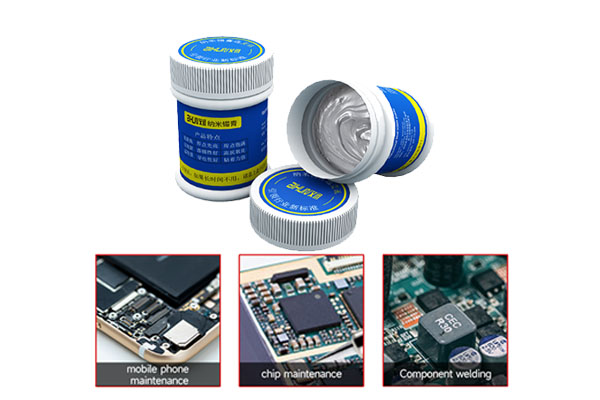
Soldering flux is a key component in the soldering process, yet many people are unaware of what it is, why it is used, and how to clean it. In this article, we’ll go over everything you need to know about soldering flux, including what it is, why it is used, and how to clean it.

Soldering flux is a chemical compound that is used in soldering processes to help the solder flow smoothly and form a strong bond between the two pieces of metal being joined. Soldering flux is typically composed of an acid, a binder, and a solvent. It can come in a paste, liquid, or powder form.
Soldering flux serves a few important functions. First, it helps to remove oxidation from the surface of the metal being soldered, which allows the solder to flow more easily and form a strong bond. Second, it helps to prevent further oxidation of the metal during the soldering process. Finally, it helps to improve the electrical connection between the two pieces of metal being joined.
1. Rosin Flux
Rosin flux is the most commonly used type of flux for soldering electronics. It is a natural product made from the resin of pine trees, and it works by helping to remove oxidation from the metal surfaces, which helps the solder form a strong bond.
2. Water Soluble Flux
Water soluble flux is a synthetic flux that is mixed with water to create a liquid solution. It is used for soldering delicate electronic components, as it creates a less aggressive flux than rosin flux.
3. Acid Core Flux
Acid core flux is a strong flux that is used for soldering metal pipes and other large metal components. It is an aggressive flux that can cause corrosion on some metals, so it is important to use it carefully.
4. No-Clean Flux
No-clean flux is a type of flux that does not require cleaning after soldering. It is a synthetic flux that is designed to not leave any residue on the soldered joint, making it ideal for use in sensitive electronics.
When it comes to applying soldering flux, choosing the right method and understanding the proper quantity and placement are key to achieving optimal results. Here are some essential tips to help you master flux application techniques:
Choose the Right Tool: Select the appropriate tool for applying soldering flux, such as brushes for large areas, pens for precision, or syringes for accuracy.
Apply the Right Quantity: Use a thin, even layer of flux to cover the soldering area, focusing on critical joints and areas that require extra protection or improved wetting.
Decide on Pre-Fluxing or Post-Fluxing: Apply flux before soldering (pre-fluxing) for thorough cleaning and oxidation prevention, or after soldering (post-fluxing) for smaller joints or targeted cleaning and wetting.
Remove Excess Flux: After soldering, remove any excess flux using water, cleaning agents, brushes, or cotton swabs to ensure clean and reliable soldered joints.
Soldering flux can be difficult to clean off of metal surfaces.
1. Cleaning flux residue from soldering surfaces can be done with a variety of methods.
2. For small, delicate surfaces, use an old toothbrush and isopropyl alcohol (rubbing alcohol). Dip the toothbrush into the alcohol and brush the flux away.
3. For larger surfaces, use a cloth dampened with isopropyl alcohol and wipe away the flux.
4. For tougher flux residue, use a brass brush and isopropyl alcohol.
5. For extremely difficult flux residue, use a scraper or razor blade. Be careful not to damage the surface.
6. If flux residue is left on the soldering surfaces, it can cause corrosion and electrical problems.
AiXun offering a high-performance, no-clean, lead-free flux that is designed to provide superior soldering performance and reliability. The flux is formulated to provide superior wetting and solderability, while reducing the formation of oxides and dross. It is designed to be used in a wide range of soldering applications, including wave soldering, reflow soldering, and manual soldering. AiXun Solder Flux is a non-corrosive, halide-free, and non-conductive flux that is RoHS and REACH compliant. It is also compatible with a wide range of soldering materials, including lead-free alloys, tin-lead alloys, and other alloys.
AiXun is a leader soldering tools&rework equipment manufacturer supplier in China. Feel free to inquiry.
More related reading >>>>>
Expert Tips and Tricks for Quality Soldering with Flux
The difference between leaded flux and lead-free flux
 WhatsApp
WhatsApp